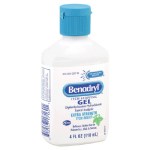FDA
Karen Starko writes: When the "financial crisis" started and the news media started throwing around numbers in the trillions and projected fixes in the billions, I realized I just didn't get it. So I got a little yellow post-it, labeled it "understanding trillions," and started a list of examples. And when I learned that the US GDP in 2006 was 13T and the derivative market, estimated in June 2007, was valued at 500T, I quickly got a sense of the potential drain of the derivative market (in which money is spent on items without real value...my definition, please correct me if I am wrong). I…
Liz Borkowski writes: Mark Pendergrast wrote yesterday about how politics plays into the work of the EIS, and it's something that I kept noticing as I read Inside the Outbreaks. As he points out, my post last week highlighted the solution to the Reye's Syndrome puzzle - which was solved by Karen Starko, who's also one of the Book Club bloggers! - but didn't get into the larger issue: there can be a big difference between solving the puzzle and solving the problem. In yesterday's post, Mark writes:
Although Karen's and subsequent CDC studies clearly demonstrated that giving children aspirin…
Mark Pendergrast writes: To kick off this book club discussion of Inside the Outbreaks, I thought I would explain briefly how I came to write the book and then suggest some possible topics for discussion.
The origin of the book goes back to an email I got in 2004 from my old high school and college friend, Andy Vernon, who wrote that I should consider writing the history of the EIS. I emailed back to say that I was honored, but what was the EIS? I had never heard of it. I knew Andy worked on tuberculosis at the CDC, but I didn't know that he had been a state-based EIS officer from 1978…
Yesterday, I wrote about the problem of people drinking their Benadryl Itch-Stopping Gel instead of using it - as designed - on the skin. As I pointed out this is not a healthy choice. And, as the FDA noted in an official warning, we are always better off if we actually - duh - read product labels.
On the other hand, not everyone is a total geek label reader like, um, me. There's always going to be people who just make an assumption based on familiar Benedryl name, especially as a couple of readers pointed out yesterday, the Benadryl gel bottle does resemble the containers used for liquid…
Yesterday, the U.S. Food and Drug Administration issued a strong recommendation to citizens of this country: Stop drinking anti-itch gels. They're meant to go on your skin. People who swallow them - and the FDA has been tallying up a series of cases - tend to suffer from dizziness, hallucinations or fall unconscious.
At that point, they probably aren't too bothered by itching, of course. But I have to think there's an easier way.
Most of those who mistakenly gulped down a few squirts of gel were consumers of Benadryl Itch-Stopping Gel. They apparently assumed this was just another…
Just because a company got it right once doesn't mean they'll get it right all the time. Back in the day, one of the great crisis management success stories was was Johnson & Johnson's handling of a case where someone intentionally introduced cynanide into on the shelf bottles of Tylenol in the fall of 1982 in the Chicago area. Seven people died. If you ever have trouble opening your over the counter or prescription drug bottles, you can thank the creep who did it -- whoever that is. No one was ever caught.
Here's a concise summary of the 1982 poisonings, courtesy Wikipedia:
Wednesday…
If you eat raw shellfish you are asking for trouble. I know, I know. There are people who love rawbars and think nothing is better than letting a raw oyster slide down their gullet. The FDA is warning consumers and retailers nationwide, though, that they might love nothing less that what could happen if they eat oysters recently harvested near Port Sulphur, Louisiana from an oyster bed known as Area 7. Not that if you do it will likely kill you. But you might wish it would, because these oysters are suspected in an outbreak of norovirus.
We've dealt with norovirus here (and in real life) a…
I had to laugh when I saw FDA was warning consumers in Puerto Rico that some hand sanitizers had high levels of bacteria (Burkholderia cepacia) that can cause serious infections. It's not really funny of course, except that one of the hand sanitizers was called “MD Quality Hand Sanitizer” (the other one was "Bee-Shield Hand Sanitizer”). Most appropriate, considering that a persistent problem with hospital infections is that we doctors are insufficiently conscientious about washing our hands between patients, A study in 2004 showed that doctors washed their hands only about half the times…
When last we visited the US food safety system during the Bush administration it was busy serving up peanut butter with a side of Salmonella. That one caused over 4 thousand product recalls, 700 Salmonella cases and at least 9 deaths. Now it's Salmonella serovar Tennessee in hydrolyzed vegetable protein (HVP), a common flavor enhancer used in all sorts of food products, including, according to the FDA, soups, sauces, chilis, stews, hot dogs, gravies, seasoned snack foods, dips and dressings. An important difference -- so far -- is that there are no illnesses traced to the contaminated…
After I wrote my last blog post on mercury, readers wrote to ask about the old-time antiseptic Mercurochrome which - as you might imagine - was named for the poisonous traces of mercury mixed into it.
One man wondered about childhood toxic exposure. Another noted that her mother still liked to tell the story of when she was a little girl and dumped Mercurochrome "all over her beautiful white bedspread." Â I had to laugh (my mother likes to tell the story of how I colored all over her white bedspread). But if you know Mercurochrome, you know that it would have made an incandescently…
It's been over a year since we discussed the Journal of the American Medical Association (JAMA) article on bisphenol-A (BPA), a high volume chemical used in plastic components of food and drinks packaging and found in 90% of all Americans screened for the chemical. It is also a chemical that disrupts the endocrine system, a complex chemical signaling system that coordinates the actions and responses of various tissues and organs. The JAMA article examined self report in adults of cardiovascular disease and diabetes ("has a doctor ever told you that you had . . . ") and measured liver enzyme…
Any concerns about the current swine flu vaccine inevitably bring up the swine flu episode of 1976. This is not 1976. For starters, this year we have a bona fide pandemic and in 1976 the virus never got out of Fort Dix, NJ. That in itself is a game changer. If there are any risks from a vaccine (and there are usually some risks, even though they are much safer than most over the counter drugs) and they are for a disease no one is at risk for, the risk - benefit equation has nothing on one side and if there is anything, no matter how rare, on the other, it makes it unfavorable for the vaccine…
I should probably create a new blogpost category just for erectile dysfunction dietary supplements adulterated with authentic or synthetic analogs of prescription phosphodiesterase-5 (PDE5) inhibitors (e.g., Viagra, Cialis).
However, FDA has already created a page for this earlier this year after dozens of companies have been identified as putting real drugs into their erectile dysfunction products.
Do the brains behind these companies not realize that FDA is now monitoring every erectile dysfunction supplement for all manner of PDE5 inhibitors?
Apparently not:
For Immediate Release: Nov. 5…
I am running out of eyelash puns having written at least six posts since the summer of 2007 on a class of anti-glaucoma drugs that have been harnessed for their cosmetic side effect: promotion of eyelash growth. Bimatoprost (Lumigan®) and latanoprost (Xalatan®) are members of the prostamide class of drugs that can manage some forms of glaucoma by reducing intraocular pressure. When administered as eye drops, the drugs mimic the effect of endogenous prostaglandin PGF2α, acting as a local hypotensive to promote outflow of aqueous humor from the eye through the trabecular meshwork.
Invoking the…
The National Pork Producers Council didn't like swine flu being called swine flu. Bad for business. So we now call it 2009 H1N1 or some such thing. It's totally swine-origin, but hey, if Lord Agribusiness doesn't like it, that's that. Same thing with antibiotic resistant bacteria, like methicillin resistant Staphylococcus aureus ("MRSA"; best source on the net Maryn McKenna's blog). The Pork Council doesn't want anyone to die of MRSA. They just don't want it associated with their product, even though a Dutch strain associated with pigs is now spreading in the US (and infecting people).
Some…
If you don't want to smell, the FDA has a recommendation: use an over-the-counter cold remedy that contains an intranasal zinc solution. You won't smell. Possibly ever again:
The U.S. Food and Drug Administration today advised consumers to stop using three products marketed over-the-counter as cold remedies because they are associated with the loss of sense of smell (anosmia). Anosmia may be long-lasting or permanent. (FDA Press Release)
Losing your sense of smell is no joke. It is intimately involved with your sense of taste and is a warning sense for dangerous gases. The role of zinc in…
We've had occasion to write about the endocrine noise-maker bisphenol-A (BPA) quote a few times (see here, here, here, here, here, here, here, here for starters). The word about BPA has gotten to consumers and they have fled BPA-containing products like they are swine flu carriers. Meanwhile the scientific evidence is piling up and what the market hasn't done will likely bring BPA into the cross-hairs of food safety regulations, if not via the FDA then by state and local governments, some of which have already acted.
So it looks like the writing is on the wall for BPA unless the food…
There has been more talk recently that our wastewater are loaded with pharmaceuticals. No surprise. People often dump out of date pills down the toilet, but much more important, they send them flushing in by excreting them. That's wastewater, though, not drinking water. They do get into drinking water, too, but at much lower levels. Now the EPA and collaborators at Baylor University have found another pathway to humans. Fish:
Fish from 5 U.S. rivers were found to be tainted with traces of medications and common chemicals, according to a new study from the U.S. Environmental Protection Agency…
I have a particular interest in food poisoning. I admit there is something unhealthy about my fascination but there it is. One of the more interesting ones is ciguatera fish poisoning, and CDC has just reported an unusual cluster from North Carolina. Ciguatera fish poisoning (CFP) happens when a carnivorous fish higher in the food chain (e.g., barracuda, amberjack, red snapper, grouper) eats a smaller plant eating species that itself has dined on a large dinoflagellate called Gambierdiscus, commonly found around coral reefs in the Caribbean and in the Pacific. These little guys have a toxin…
When the Wall Street Journal called attention to a claim that the Journal of the American Medical Association called a whistle-blower a "nobody" and a "nothing," a claim JAMA denied, I didn't know what to think. I was inclined to give JAMA the benefit of the doubt. Whatever dealings I've had (and they are few) with JAMA's editor in chief, Dr. Catherine DeAngelis, she's been pleasant and has a reputation for being a tough and intelligent editor. It sounded as if someone had gotten a little irritated and maybe said things in a way that wasn't quite appropriate, but these things happen. But…


